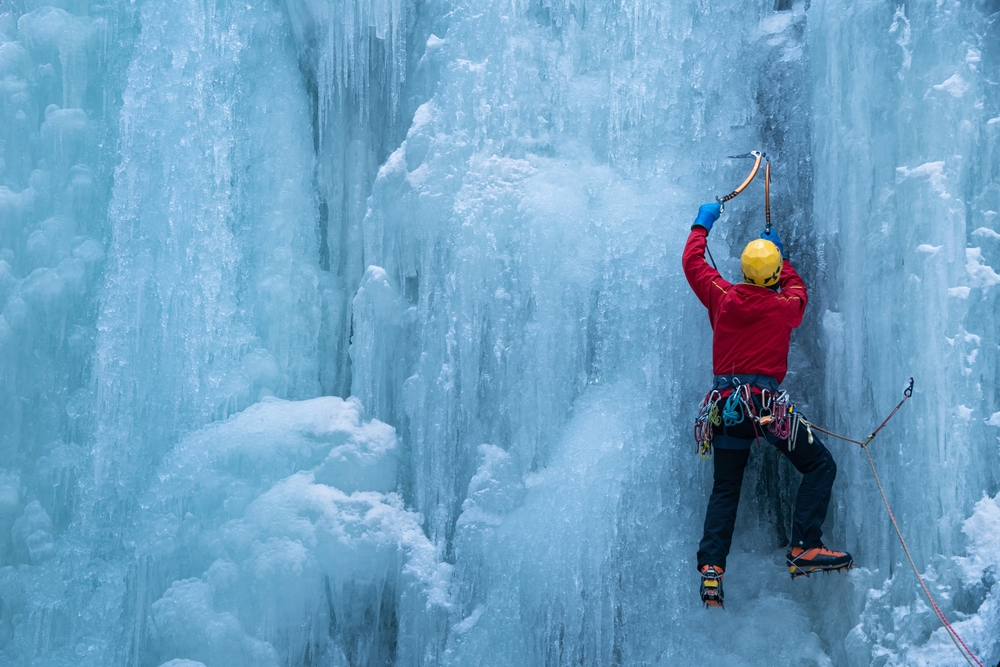Discovering the Thrill and Tenacity of Ice Climbing: A Comprehensive Guide
Ice climbing, a formidable venture into the frozen wilderness, is a sport that tests human endurance and fortitude. As athletes ascend icy crags and frozen waterfalls, they not only challenge their physical strength but also their mental grit. While this sport may not be for the faint-hearted, it offers an exhilarating experience that brings out the resilience and determination in every climber.

Tracing the Icy Trails: A Historical Perspective
Ice climbing originated as a subset of mountaineering, where climbers had to navigate icy obstacles to reach mountain summits. The sport saw its genesis in the European Alps in the 19th century. As mountaineering equipment advanced, so did the methods of climbing sheer ice surfaces. The 20th century marked significant improvements with the introduction of crampons, ice axes, and screw-in anchors, transforming ice climbing from a survival necessity into an innovative sport.
Ice Climbing Today: An Evolving Landscape
In the contemporary sports world, ice climbing has carved its niche as a standalone discipline, shedding its image as a mere subset of mountaineering. The sport now boasts international competitions, with two primary events - speed and lead. Speed climbing involves ascending a specified route in the shortest time, while the lead event focuses on climbing complex routes without falling. These competitions have pushed the boundaries of what athletes can achieve on ice, turning the sport into a spectacle of strength, agility, and precision.
The Intricacies of Ice: Training and Performance Strategies
Ice climbing demands a unique set of skills. Core strength, grip strength, and cardiovascular fitness are crucial, but the sport also requires strategic route planning and swift decision-making. Athletes often cross-train with rock climbing and weightlifting to achieve the necessary physical prowess. Additionally, mental training plays a significant role, with climbers needing to manage fear and stress during their ascents.
The Peaks and Troughs: Benefits and Challenges of Ice Climbing
Ice climbing offers unparalleled rewards - the adrenaline rush of ascending a frozen waterfall, the satisfaction of conquering a challenging route, and the serenity of remote icy landscapes. However, the sport comes with substantial risks. Weather conditions can be unpredictable, the ice’s integrity may vary, and climbers must be vigilant about altitude sickness. Despite these challenges, the sport’s thrilling nature and the sense of accomplishment it provides continue to attract athletes worldwide.
The Icy Future: Trends and Predictions
As the sport evolves, so does the gear, with manufacturers continually developing more efficient and safer equipment. Moreover, the growing popularity of indoor ice climbing facilities provides athletes with year-round training possibilities. Sustainability is also gaining focus, with climbers and governing bodies aiming to minimize their environmental impact. As we move forward, the ice climbing community continues to grow, welcoming more athletes into this exhilarating sport and fostering a spirit of camaraderie and resilience.
Ice climbing is more than a sport - it’s a testament to human tenacity and the relentless pursuit of pushing boundaries. As athletes scale icy heights, they not only challenge their physical limits but also inspire others with their grit and determination. Despite its challenges, ice climbing offers a unique blend of thrill, satisfaction, and serene beauty that keeps climbers coming back for more. And as the sport evolves, it continues to capture the imagination of athletes and enthusiasts alike, promising an exciting future ahead.




